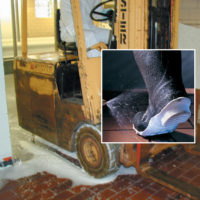CDC Study Highlights Restaurant Characteristics Most Associated With Food Cross-Contamination

Image credit: Elle Hughes via Pexels
A recent study led by the U.S. Centers for Disease Control and Prevention (CDC) investigated factors that could contribute to cross-contamination of food in restaurants, and observed more frequent contamination actions in establishments lacking food safety certification, food safety training, and handwashing policies.
According to CDC, over 800 foodborne illness outbreaks are reported to the agency annually, with 60 percent linked to restaurants.
To identify restaurant characteristics, policies, and practices associated with contamination, CDC’s Environmental Health Specialists Network (EHS-Net) collected data through manager interviews and kitchen observations in 312 establishments across six EHS-Net sites in five states, specifically: California, Minnesota, New York City, New York state (excluding New York City), Rhode Island, and Tennessee. Restaurants were defined as establishments that prepare and serve food or beverages to customers; institutions, food carts, mobile food units, temporary food stands, supermarkets, restaurants in supermarkets, and caterers were excluded from the study.
During manager interviews, food safety assessments were also conducted. Data collected from the 50-minute kitchen observations included restaurant characteristics, such as the number of hand sinks and the number of critical violations on the restaurant’s last inspection, and food preparation complexity. The researchers also observed food workers preparing food and noted whether they engaged in any of eight actions that could lead to cross-contamination, specifically, potential cross-contamination from:
- Bare hands to ready-to-eat (RTE) foods
- Dirty gloves to RTE foods
- Dirty bare hands to clean equipment or clean food preparation (prep) surfaces
- Dirty gloved hands to clean equipment or clean food prep surfaces
- A wiping cloth (not properly stored in sanitizer) to clean bare or gloved hands
- A wiping cloth (not properly stored in sanitizer) to clean equipment or clean food prep surfaces
- Dirty equipment or utensils to ready-to-eat foods
- Raw animal foods stored over or on ready-to-eat foods in a refrigeration unit.
Most of the managers interviewed reported being currently or previously food safety certified (80.7 percent), or at least trained in food safety by their establishment (95.2 percent). Just over half (56.9 percent) of participating managers received a score of 80 percent or higher on the food safety assessment administered by the researchers. Managers also reported that most restaurants had at least one worker trained in food safety (94.4 percent), but less than half (43.8 percent) had any workers certified in food safety.
Manager interviews also revealed that over 85 percent of restaurants had written or verbal policies designed to minimize cross-contamination. Specifically, 96.1 percent of restaurants had a handwashing policy, 88.3 percent had a policy to minimize bare-hand contact with RTE foods, and 94.5 percent had an in-use wet wiping cloth storage policy.
Overall, the researchers observed an average of 1.29 potential cross-contamination actions per restaurant, and at least one food worker action leading to food contamination was seen in 63 percent of establishments. Cross-contamination events were observed from bare hands or dirty gloves to ready-to-eat foods in 35.9 percent of restaurants; from dirty bare or gloved hands to clean equipment or food prep surfaces in 32.1 percent of restaurants; from a wiping cloth not properly stored in sanitizer to clean bare hands, gloved hands, equipment, or food prep surfaces in 31.4 percent of restaurants; from dirty equipment or utensils to ready-to-eat foods in 14.9 percent of restaurants; and from raw animal foods to ready-to-eat foods in a refrigeration unit in 17.2 percent of restaurants.
Actions that could lead to contamination were more often observed in restaurants that did not require manager certification and did not have workers trained in food safety, supporting existing research showing that food safety training and certification are important to retail food safety. Practices that could lead to contamination were more frequent in restaurants that lacked policies on when and where to wash hands, and on minimizing bare-hand contact with RTE foods.
Independent restaurant ownership was also found to be associated with potential cross-contamination actions, which is consistent with research showing that chain restaurants tend to have better food safety practices than independently owned restaurants, possibly due to increased resources, better training, and procedures that meet national food safety standards.
Interestingly, cross-contamination actions were observed more often in restaurants with more experienced managers; at least one other study has found a negative relationship between manager experience and food safety outcomes, possibly due to manager complacency or burnout over time. More research is needed to explore this relationship between manager experience and food safety.
Looking for a reprint of this article?
From high-res PDFs to custom plaques, order your copy today!






